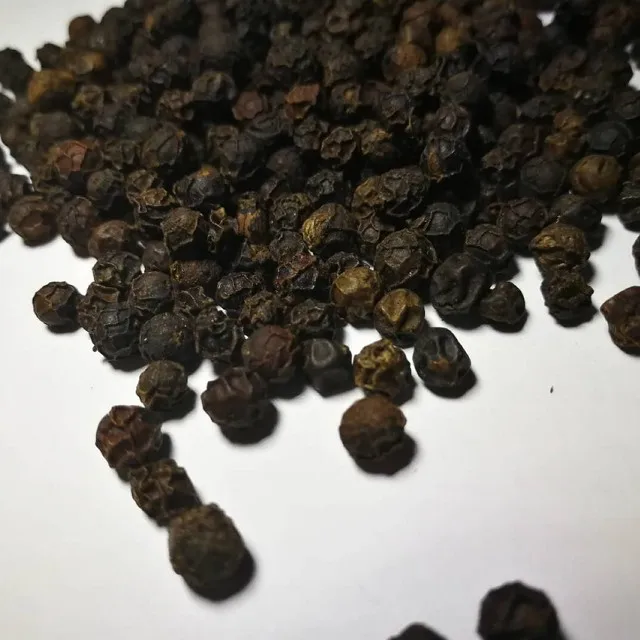
Give each a try to taste the wonderful flavour it holds! Depending on its variety, black pepper is recommended for red meats, white pepper for fish or fruit salads and the red ones can be used for desserts. The Kampot pepper is relatively sweeter, less bold. "That's when you know you have the real one." Then it calms down, down, down – like flowers on the back of your tongue," he said, pointing into his mouth. You can count on the burn to awaken the palates!Ī local shared with BBC Travel: "When you try Kampot pepper, it's hot at first. The unripe green pepper has a citrusy flavour and is less bitter, while the dried berries (harvested when turning from green to yellow) have a more substantial floral flavour with a hint of eucalyptus. With the province's micro-climate and developed techniques to ensure optimum soil drainage, Kampot pepper is known for its aroma and balanced pungency. The Kampot pepper is the first Cambodian product to obtain the Protected Geographic Indication (PGI) status. Peppercorns have been cultivated in Cambodia since the 13th Century. Next on the list, we have for you "The Champagne of Pepper" from the provinces of Kampot, southern Cambodia. Grind away for an extra kick of flavours! This rare peppercorn with mighty peppery taste pairs well with many dishes, such as sauteed fish fillet, stir-fries, beefsteak, soups, and noodle soup. It is closely rival to Cambodia's Kampot Pepper, which lies just north of Phú Quốc, a few hours of ferry ride away. They are well-known for their big seed, thin husk, pungency and heat!ĭid you know that pepper changes colour and flavour as it matures?The Phú Quốc red variety is riped, and it packs a vibrant sweet yet citrusy heat. The world-leading black pepper exporter is especially renowned for their peppercorns from their largest island - Phú Quốc.ĭue to the island's warm sunny climate with rainfall in due season and proximity to the ocean, Phú Quốc pepper is cultivated all over the island. Image source via Phu Quoc Island ExplorerĪnother Southeast Asia country endowed with an abundant harvest of peppercorns is Vietnam, ranked No.1 in WorldAtlas – "World's Top Black Pepper Producing Countries" (as of writing). Sarawak pepper makes an excellent accompaniment to grilled meat, stir-fried vegetables, soup, gravies, and even fish and tossed salads! It is also one of the main ingredients of the famous Sarawak Laksa! If your love for pepper runs deep, be sure to try Sarawak's renowned white pepper too! Use it to marinate your food or sprinkle it into your cooked dishes. It is one seasoning that you can put on almost everything. You can definitely count on the heat too! Sarawak peppercorns are medium-sized it features a bold woody-piney taste with a citrusy aroma.

Its rich and distinctive flavour is preserved through tried-and-tested traditional processing methods. The Sarawak spice story dates back to the 7th Century and is Malaysia's biggest pepper producer. This has much to do with the country's tropical climate, Sarawak's hilly slopes, and unique soil composition perfect for harvesting peppercorns. It's been featured in TasteAtlas (world atlas of food) - "6 Most Popular Peppercorns in the World" and is highly rated as a delicious all-rounder peppercorn. This world-famous Malaysia peppercorn is grown in Sarawak, north of Borneo. It’s the processing of those fruits that determines the eventual disposition of the spice.Sarawak Peppercorns Image source via Langit The peppercorns are all Piper nigrum which is actually a flowering vine from which the dried fruits are cultivated. The final flavor and appearance of the peppercorns is largely dependent on the peppercorn’s growing environment and treatment. The colors, of course, refer to the appearance of the peppercorn – each having its own unmistakable identity – White, Red, and Black.

Malabar refers to a region of southwest India.

The First word refers to the product’s origin. What’s in a name? The strange sounding names of these peppercorns actually make a lot of sense. These three peppercorns are essentials in the discerning chef’s pantry and it would be a real shame to cook without them! We’re not referring to the colors of our great American flag, but the peppercorns that should be in your kitchen! We’re talking about Kampot Red, Malabar White, and Sarawak Black peppercorns! Each has their own distinctive characteristics and purposes in your kitchen. We know, something about that doesn’t sound quite right.


 0 kommentar(er)
0 kommentar(er)
